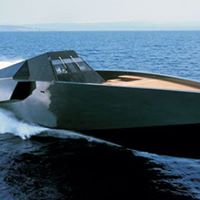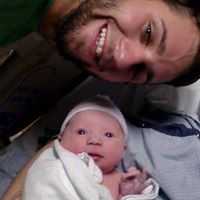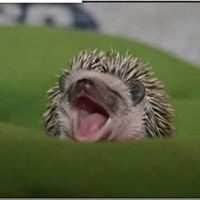Thomas C Wolcott
age ~56
from La Grange, IL
- Also known as:
-
- Thomas K Wolcott
- Tom K Wolcott
- Tom C Wolcott
- Thomas C Wollcott
- Tamara Wolcott
- Olcott V Thomas
Thomas Wolcott Phones & Addresses
- La Grange, IL
- Oak Lawn, IL
- Frankfort, IL
- 6922 115Th St, Worth, IL 60482 • (708)4481386
- Peoria, IL
- Ojai, CA
- La Grange, IL
- Willeys, IL
Industries
Food & Beverages
Us Patents
-
Automatic Draft Length Compensation For Slicing Machine System
view source -
US Patent:6763748, Jul 20, 2004
-
Filed:Jul 26, 2002
-
Appl. No.:10/206881
-
Inventors:Thomas C. Wolcott - Mokena IL
Glenn Sandberg - Mokena IL -
Assignee:Formax, Inc. - Mokena IL
-
International Classification:B26D 706
-
US Classification:83 29, 83 768, 83 88, 83155, 83358, 83360, 83932
-
Abstract:A slicing and conveying system forms a three or more flavor-combined draft. A first slicing machine slices a succession of first and third slices in first and third shingled drafts. A second slicing machine slices a succession of second slices in second shingled drafts. A pass-through conveyor transfers the first draft to an output conveyor of the second slicing machine, wherein the second draft is added to the first draft to form a first combined draft. An overlap conveyor receives the first combined draft and merges the first combined draft with the third draft on the overlap conveyor to form an elongated combined draft. Optical sensors determine lengths of the first draft, the second draft, the third draft, and/or the elongated combined draft. A control receives input from the sensors and outputs a control signal to one or more output conveyors of the slicing machine and/or the overlap conveyor to adjust the spacing of the slices within the first, second and third drafts and/or to control the length of the elongated combined draft.
-
Optical Grading System For Slicer Apparatus
view source -
US Patent:6997089, Feb 14, 2006
-
Filed:Jun 25, 2002
-
Appl. No.:10/179549
-
Inventors:Scott A. Lindee - Mokena IL, US
Thomas C. Wolcott - La Grange IL, US -
Assignee:Formax, Inc. - Mokena IL
-
International Classification:B26D 7/06
G01N 21/00 -
US Classification:83 29, 83 73, 83 768, 83107, 83520, 83932
-
Abstract:A method of classifying slices or a portion cut from a food product according to an optical image of the slice. After a slice is removed from a food product loaf the slice is passed into an image field of a digital image receiving device. A control generates a pixel-by-pixel image data of the slice using input from the digital image receiving device. The control calculates a surface area of the slice from the data, and a fat content of the slice on a pixel-by-pixel basis. The fat content data is compared to at least one predetermined limit and the slice is classified accordingly.
-
Rotary Mold System For Molding Food Products
view source -
US Patent:8469697, Jun 25, 2013
-
Filed:Jul 20, 2011
-
Appl. No.:13/187426
-
Inventors:Scott A. Lindee - Mokena IL, US
David Hansen - Orland Park IL, US
Salvatore Lamartino - Orland Park IL, US
Bruce Bauer - Mokena IL, US
Thomas C. Wolcott - Mokena IL, US
Steve Ill - Mokena IL, US
E. William Wight - Roscoe IL, US -
Assignee:Formax, Inc. - Mokena IL
-
International Classification:B29C 45/42
-
US Classification:425556, 235375, 425572, 425588
-
Abstract:A rotary molding system for molding food products, mold cavities formed when a mold shell rotates mold shapes disposed along the mold shell into a fill position between a fill plate and a wear plate. Molded food products are removed from mold cavities using knock-out cups, the use of air pressure, or the use of a vacuum source disposed below the mold cavity, without the need to slow the rotation of the mold shell. Knock-out cups may be used with a heating system to reduce accumulation of unwanted materials on the knock-out cups. The rotary molding system can also be used to form products with contoured surfaces. A smart tagging system can be used to ensure that compatible sets of mold shells and knock out cups are being used. A vacuum region may be disposed upstream of the fill position to remove air within the mold cavity prior to filling.
-
High Speed Slicing Machine
view source -
US Patent:20110265624, Nov 3, 2011
-
Filed:May 2, 2011
-
Appl. No.:13/099325
-
Inventors:James E. Pasek - Tinley Park IL, US
Thomas C. Wolcott - La Grange IL, US -
International Classification:B26D 7/06
-
US Classification:83409
-
Abstract:A high speed food article slicing machine with a slicing station, a moveable frame supporting a food article feed mechanism frame, a food article gate, and a safety guard system for detecting an intrusion into the machine. Food articles are loaded onto a lift tray and raised to a staging position where food articles are in contact with a food article gate. The lift tray is located inline with the food article feed paths such that lateral shifting of food articles into the feed paths is not needed. Food article grippers, individually driven along feed paths by an overhead conveyor, move food articles over the food article gate towards the slicing station. The food article gate functions to assist in removal of food article end portions. The slicing machines utilizes a horizontally radiating laser intrusion detector to shut down systems when an unwanted intrusion is sensed.
-
Method And Apparatus For Weighing Sliced Food Products
view source -
US Patent:20120205164, Aug 16, 2012
-
Filed:Oct 26, 2010
-
Appl. No.:13/504024
-
Inventors:Paul McLaughlin - South Chicago Heights IL, US
Brad DeBlecourt - Lockport IL, US
Thomas C. Wolcott - La Grange IL, US
Scott A. Lindee - Mokena IL, US -
International Classification:G01G 9/00
G01G 13/16 -
US Classification:177 1, 177 59
-
Abstract:A method for weighing sliced products to generate product batches of a pre-determined weight. A slicer slices products which are disposed onto a slice scale located beneath the output end of the slicer. An intermediate weight is measured at a pre-determined point in the slicing process. The intermediate weight information is used to calculate the minimum number of completion slices, based on thicknesses of the slices, needed to meet the target weight. The competed draft is transferred to a check sale where a final draft weight is measured and compared to a sum of the intermediate weight and the weight of the completion slices. Comparison of the weight is used to adjust slicing parameters for more precise targeting of the desired weight of the next draft. Completion slices may be adjusted in thickness to minimize the giveaway weight.
-
Automated Product Profiling Apparatus And Product Slicing System Using The Same
view source -
US Patent:20120212603, Aug 23, 2012
-
Filed:Oct 26, 2010
-
Appl. No.:13/504008
-
Inventors:Scott A. Lindee - Mokena IL, US
Thomas C. Wolcott - La Grange IL, US
Salvatore Lamartino - Orlando Park IL, US
Gage Fox - New Lenox IL, US -
International Classification:H04N 7/18
G01G 13/00 -
US Classification:348 89, 177 52, 348E07085
-
Abstract:An apparatus for acquiring a profile of a food product for use in subsequent processing of the food product includes a scanning area and one or more product drives for driving a product through the scanning area in a longitudinal direction. First line lasers project one first transverse laser line transversely to the longitudinal direction on the first surface and two first cameras arranged to capture different, overlapping first transverse image portions of the first transverse laser line. A reference laser projects a beam on the first surface that indicates a transverse reference position, and the two first cameras also capture the reference position. A control system uses the transverse reference position to combine the different first transverse image portions captured by the two first cameras to calculate a first profile of the first surface at multiple positions along a length of the first surface as the product is driven through the scanning area.
-
Method And Apparatus For Rotary Molding
view source -
US Patent:20130259991, Oct 3, 2013
-
Filed:May 23, 2013
-
Appl. No.:13/900970
-
Inventors:David Hansen - Orland Park IL, US
Salvatore Lamartino - Orland Park IL, US
Bruce Bauer - Mokena IL, US
Thomas C. Wolcott - Mokena IL, US
Steve Ill - Mokena IL, US
E. William Wight - Roscoe IL, US -
International Classification:A22C 7/00
-
US Classification:426389, 425241
-
Abstract:A rotary molding system for molding food products, mold cavities formed when a mold shell rotates mold shapes disposed along the mold shell into a fill position between a fill plate and a wear plate. Molded food products are removed from mold cavities using knock-out cups, the use of air pressure, or the use of a vacuum source disposed below the mold cavity, without the need to slow the rotation of the mold shell. Knock-out cups may be used with a heating system to reduce accumulation of unwanted materials on the knock-out cups. The rotary molding system can also be used to form products with contoured surfaces. A smart tagging system can be used to ensure that compatible sets of mold shells and knock out cups are being used. A vacuum region may be disposed upstream of the fill position to remove air within the mold cavity prior to filling.
-
Method Of Manufacturing Food Loaf Slice Groups
view source -
US Patent:57248745, Mar 10, 1998
-
Filed:Jul 25, 1996
-
Appl. No.:8/690327
-
Inventors:Scott A. Lindee - New Lenox IL
Wilbur A. Janssen - New Lenox IL
Thomas C. Wolcott - Oak Lawn IL -
Assignee:Formax, Inc. - Mokena IL
-
International Classification:B26D 730
-
US Classification:83 27
-
Abstract:A high speed food loaf slicing machine slices two food loaves simultaneously, using one cyclically driven knife blade; the slices are stacked or shingled in groups on a receiving conveyor located below the slicing station. Independent loaf feed drives are provided; slices cut from one loaf may be thicker than slices from the other. Each loaf feed drive includes two "short" conveyors each driven at a predetermined speed; the conveyor speeds may be different. In each machine cycle the receiving conveyor is moved down to accommodate an increasing number of slices; when a slicing cycle is completed, the receiving conveyor rapidly discharges the slice groups onto a deceleration conveyor and moves back up to start a new slicing operation. The loaf feed drives are reversed at the end of a slicing cycle, stopped, and then reversed again before the next slicing cycle. In each machine cycle previously cut groups of slices are weighed as they traverse a scale conveyor; the weights thus determined control two transfer conveyors, one for each loaf sliced.
Resumes

Electrical Engineering Manager At Formax Inc.
view sourceLocation:
Greater Chicago Area
Industry:
Food & Beverages
Googleplus

Thomas Wolcott

Thomas Wolcott

Thomas Wolcott
view source
Thomas Wolcott
view source
Thomas Wolcott
view source
Thomas Wolcott
view source
Thomas Wolcott
view source
Thomas Wolcott
view source
Thomas Wolcott
view source
Kirk Thomas Wolcott
view sourceMyspace
Classmates

Thomas Wolcott
view sourceSchools:
Latino Youth Alternative High School Chicago IL 1993-1997

Thomas Wolcott | College ...
view source
College High School, Bart...
view sourceGraduates:
Thomas Wolcott (1964-1968),
Cara Strunk (1972-1976),
Kathy Burris (1965-1969),
Teresa Demaris (1974-1978),
Leona Scott (1969-1973)
Cara Strunk (1972-1976),
Kathy Burris (1965-1969),
Teresa Demaris (1974-1978),
Leona Scott (1969-1973)

Lincoln-Way High School, ...
view sourceGraduates:
thomas wolcott (1968-1972),
DODIE MILLER (1976-1980),
Craig Emory (1972-1976),
Kathy Crafton (1973-1977)
DODIE MILLER (1976-1980),
Craig Emory (1972-1976),
Kathy Crafton (1973-1977)
Youtube
Get Report for Thomas C Wolcott from La Grange, IL, age ~56







